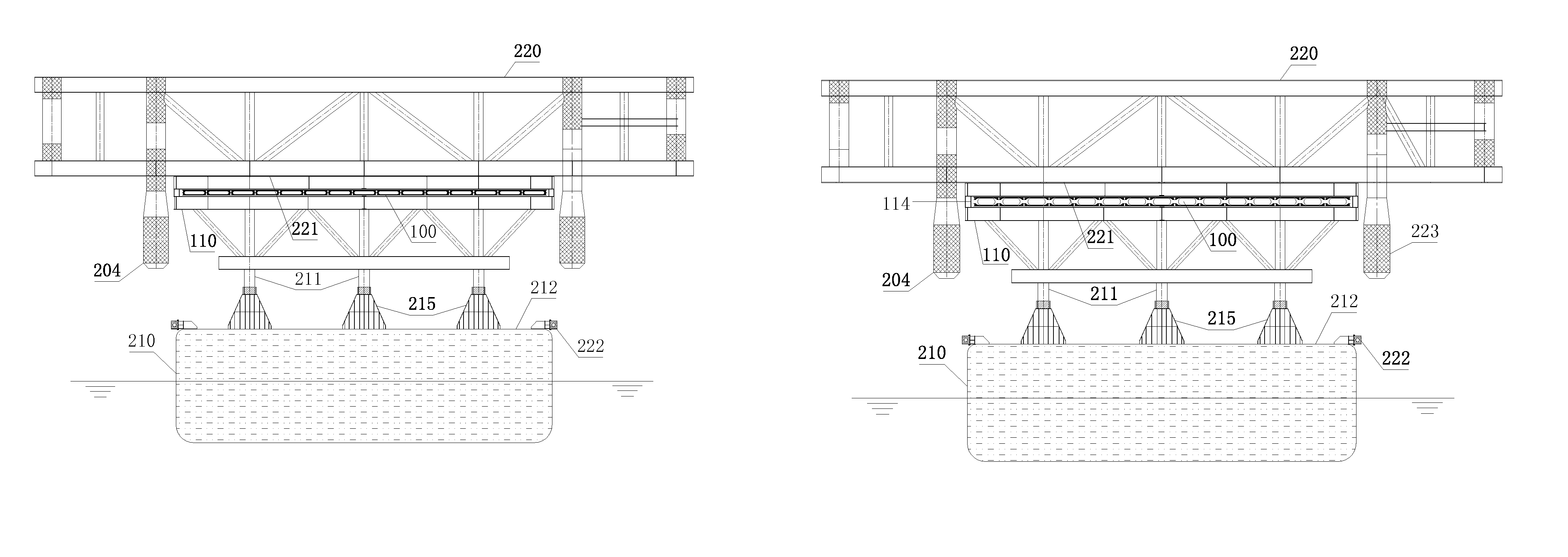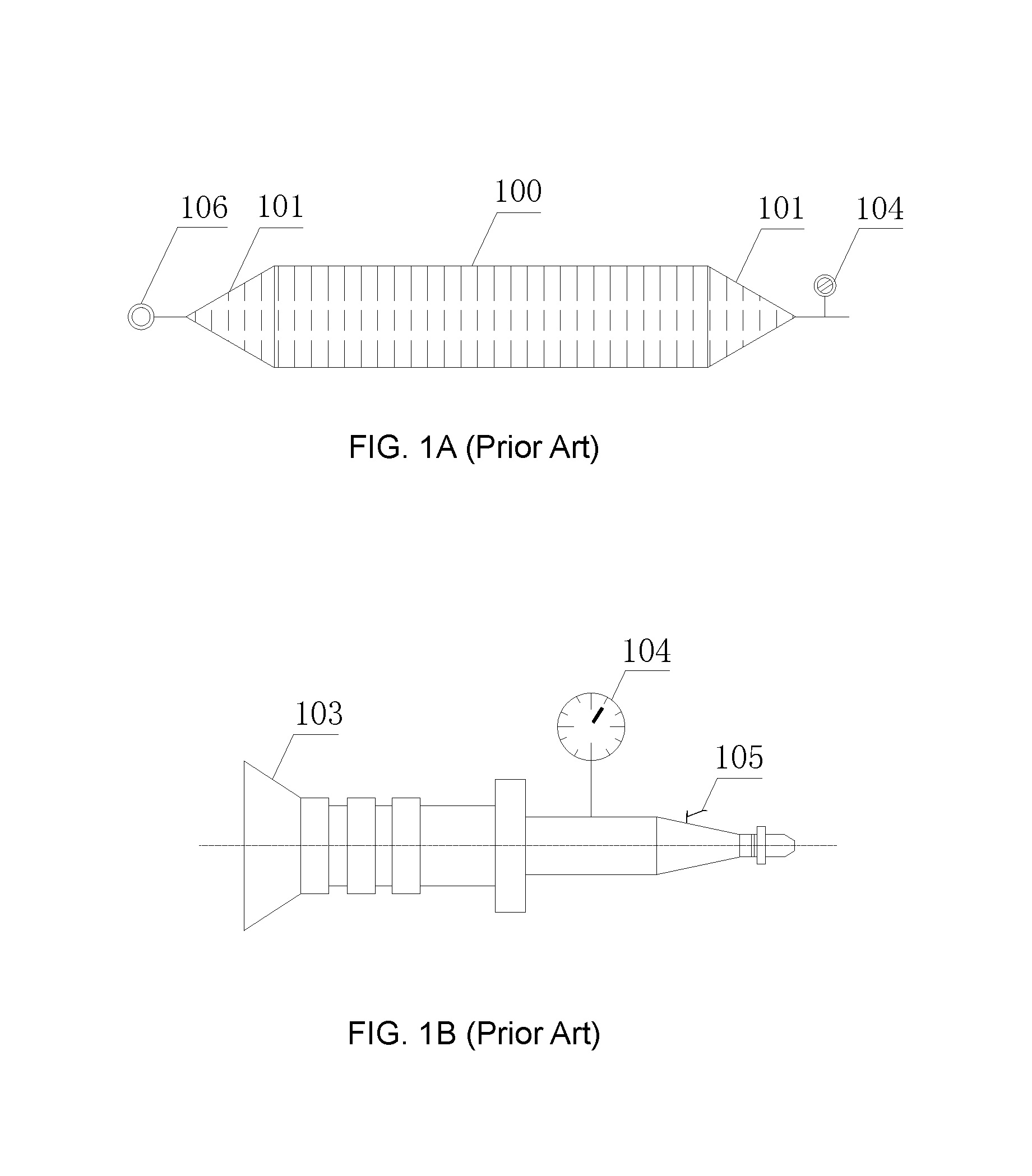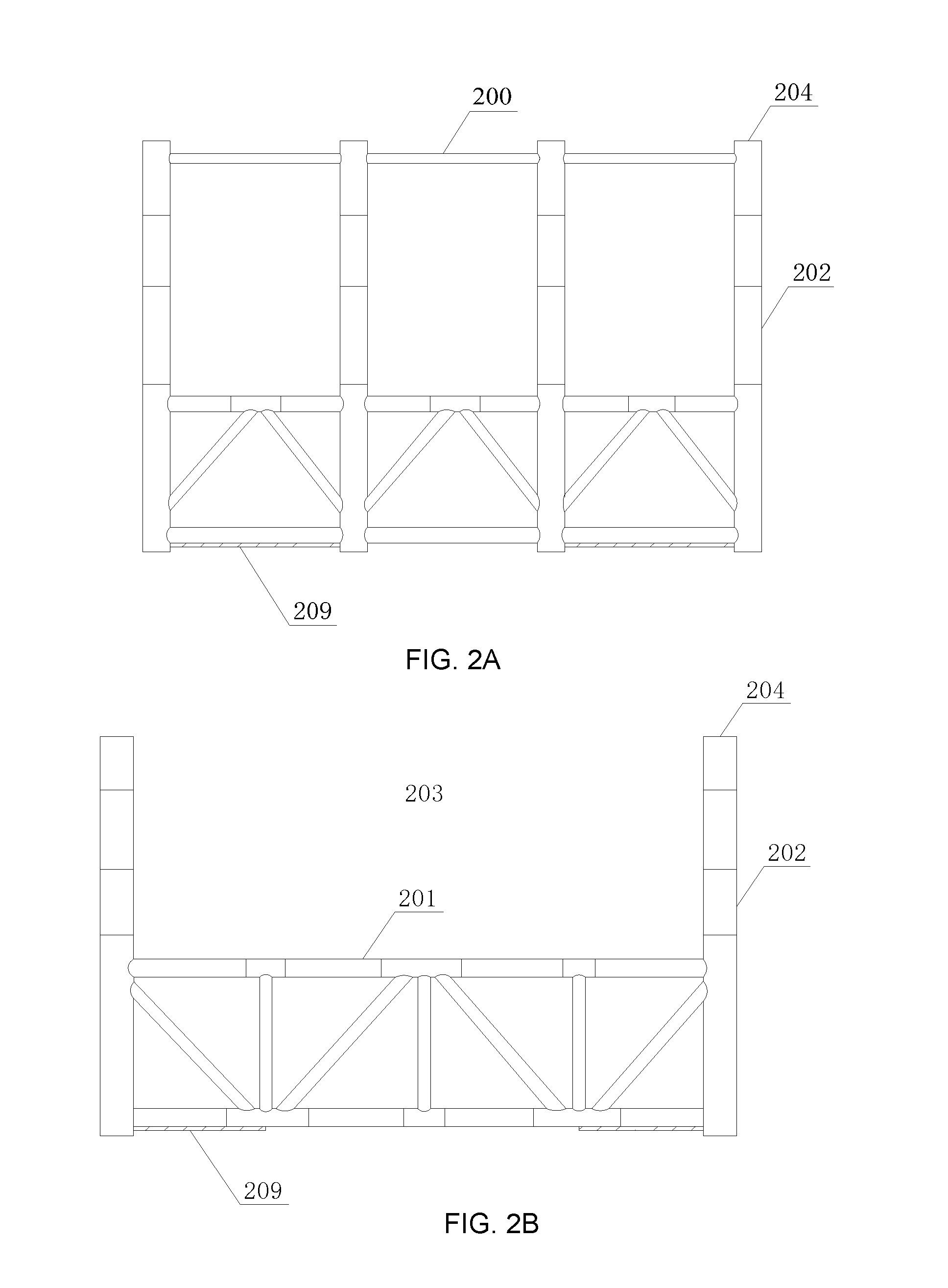Pneumatic load-transfer system and method for mating an integrated deck with a pre-installed platform substructure
a technology of platform substructure and load transfer system, which is applied in the direction of artificial islands, foundation engineering, construction, etc., can solve the problems of potential damage, relative motion between the vessel and the deck may pose a potential danger of damage, and damage to the structure, and achieves the effect of easy adjustment of vertical support stiffness, low cost and high reliability
- Summary
- Abstract
- Description
- Claims
- Application Information
AI Technical Summary
Benefits of technology
Problems solved by technology
Method used
Image
Examples
Embodiment Construction
[0045]Shipbuilding in sand beaches started in 1980's in Southern China. Builders place wood blocks on sand beach and start ship construction on the tops of these blocks with the utilization of land cranes. When the construction is complete, a special type of air bags, Ship Launching Air Bags (SLAB), is placed under the ship keel longitudinally between two rows of wood blocks. Injecting air to these SLABs and the whole ship can be lifted off these wood blocks. After the lifting operation, these wood blocks can be then removed off the ship keel. Once cutting holding lines, the ship will be moved toward the sea along with the rolling of these SLABs.
[0046]The ship launching method described above has been successfully used in China for over 20 years. Recently, the applications of SLAB have expanded to other areas, such as ship salvages and a floatation tool for the transportation of a large concrete structure for a bridge. Over the years, SLABs have become a mature, reliable and off she...
PUM
 Login to View More
Login to View More Abstract
Description
Claims
Application Information
 Login to View More
Login to View More - R&D
- Intellectual Property
- Life Sciences
- Materials
- Tech Scout
- Unparalleled Data Quality
- Higher Quality Content
- 60% Fewer Hallucinations
Browse by: Latest US Patents, China's latest patents, Technical Efficacy Thesaurus, Application Domain, Technology Topic, Popular Technical Reports.
© 2025 PatSnap. All rights reserved.Legal|Privacy policy|Modern Slavery Act Transparency Statement|Sitemap|About US| Contact US: help@patsnap.com



